RAAW Madonna V3
Wheel Size: 29’’
Travel: 160 mm rear / 170 mm front
Geometry Highlights:
- Sizes offered: S, M, L, XL, XXL
- Headtube angle: 64° (adjustable)
- Reach: 480 mm (size Large)
- Chainstay length: 450 mm (Size Large, +/- 5 mm via flip chip)
Frame Material: Aluminum
Price: Frame kits from $2,520
Blister’s Measured Weight (Size Large, as built w/ Fox Float X): 35.96 lb / 16.31 kg
Test Locations: Washington
Reviewers:
- David Golay: 6’, 170 lbs / 183 cm, 77.1 kg
- Zack Henderson: 6’, 160 lbs / 183 cm, 72.6 kg
Test Duration: 3 months
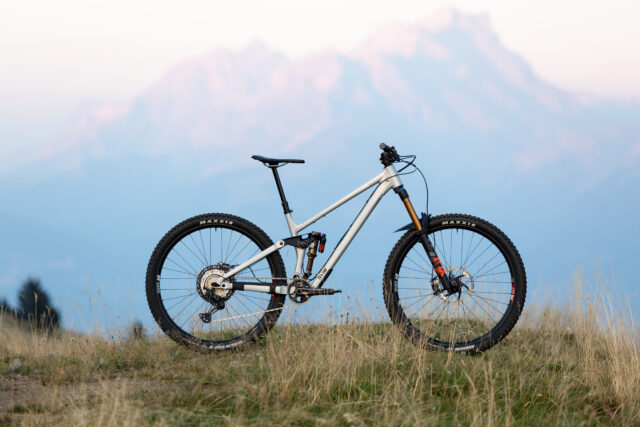
Intro
The original Madonna was RAAW’s first model, built to be an Enduro race bike with an emphasis on reliability and serviceability over aesthetic frills, and the new Madonna V3 carries on that tradition. It’s an aluminum frame with straight tubes, big bearings, and a clear focus on being easy to live with day in and day out. While it looks a lot like the earlier iterations of the Madonna, the new one gets updated (and much more adjustable) geometry, a new XXL size, refined suspension kinematics, and a whole lot more. Let’s check it out:
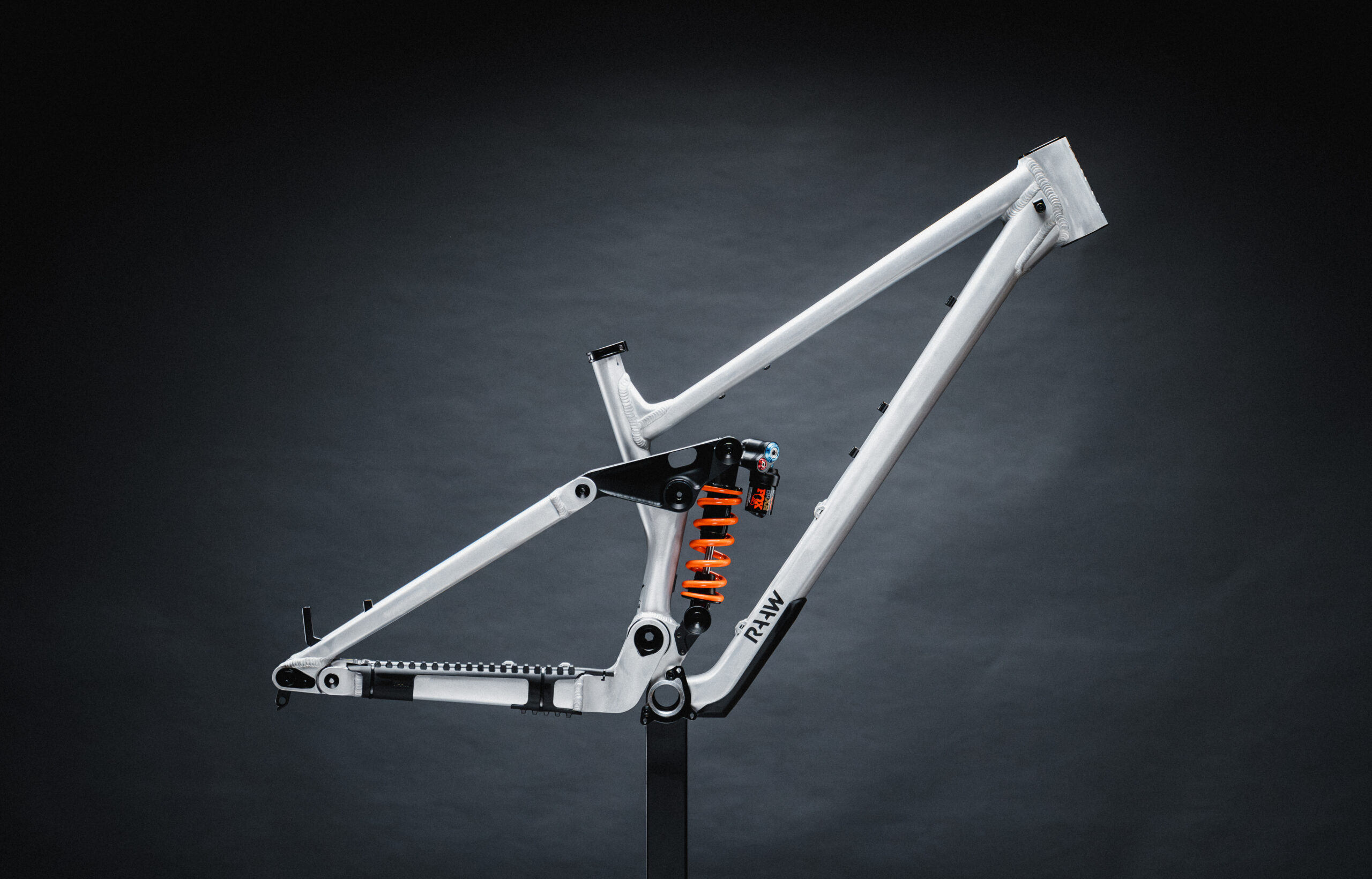
The Frame
The new Madonna V3 doesn’t look all that different from the V2.2 that it replaces at first glance, but a lot of the details have been tweaked. It’s still offered in aluminum only and uses a Horst-link layout with a vertically oriented shock to produce its 160 mm of rear-wheel travel. As RAAW puts it, “there isn’t much ‘design’ forced on the Madonna V3.” It’s a simple, purposeful-looking bike and it’s clear that RAAW was more interested in making the bike work the way they wanted than getting wild with the industrial design.
One of the more interesting features of the Madonna is that RAAW offers two different rocker links for the bike, which use different shock strokes (and thereby different overall leverage curves) to get the same 160 mm of travel. The higher-leverage 60 mm stroke combination is intended for riders under 90 kg (~200 lb) while the 65 mm stroke setup is meant for folks over that threshold. It’s not a new idea for RAAW — the prior-generation Madonna used the same arrangement — but it’s an interesting idea to better tune the suspension kinematics to a given rider’s weight. No matter which rocker you go with, the Madonna has about 26% total progression (in the default setting; more on that in a minute) and RAAW the leverage curve has been made as straight as possible, with a particular eye to increasing initial sensitivity early in the stroke.
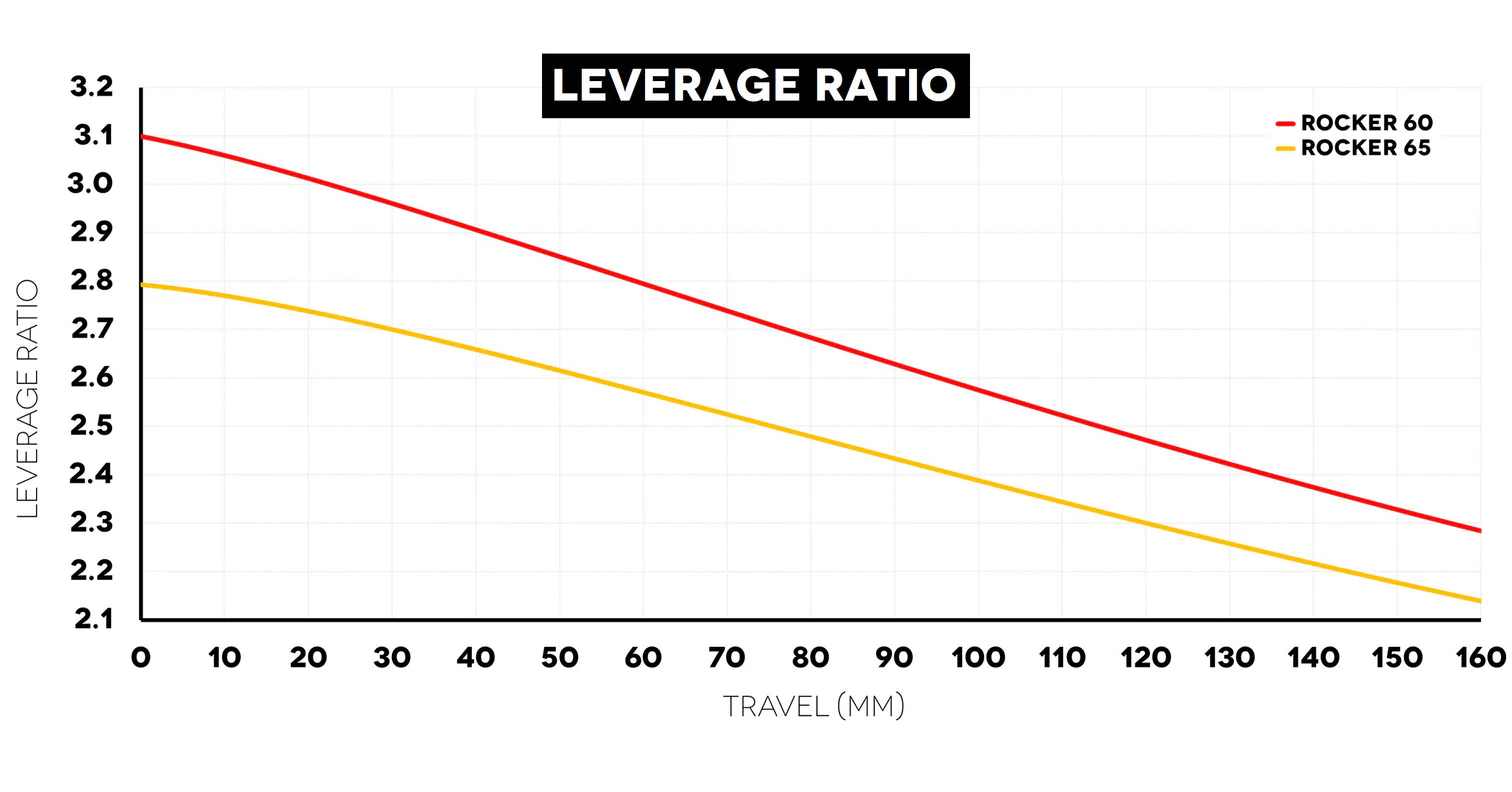
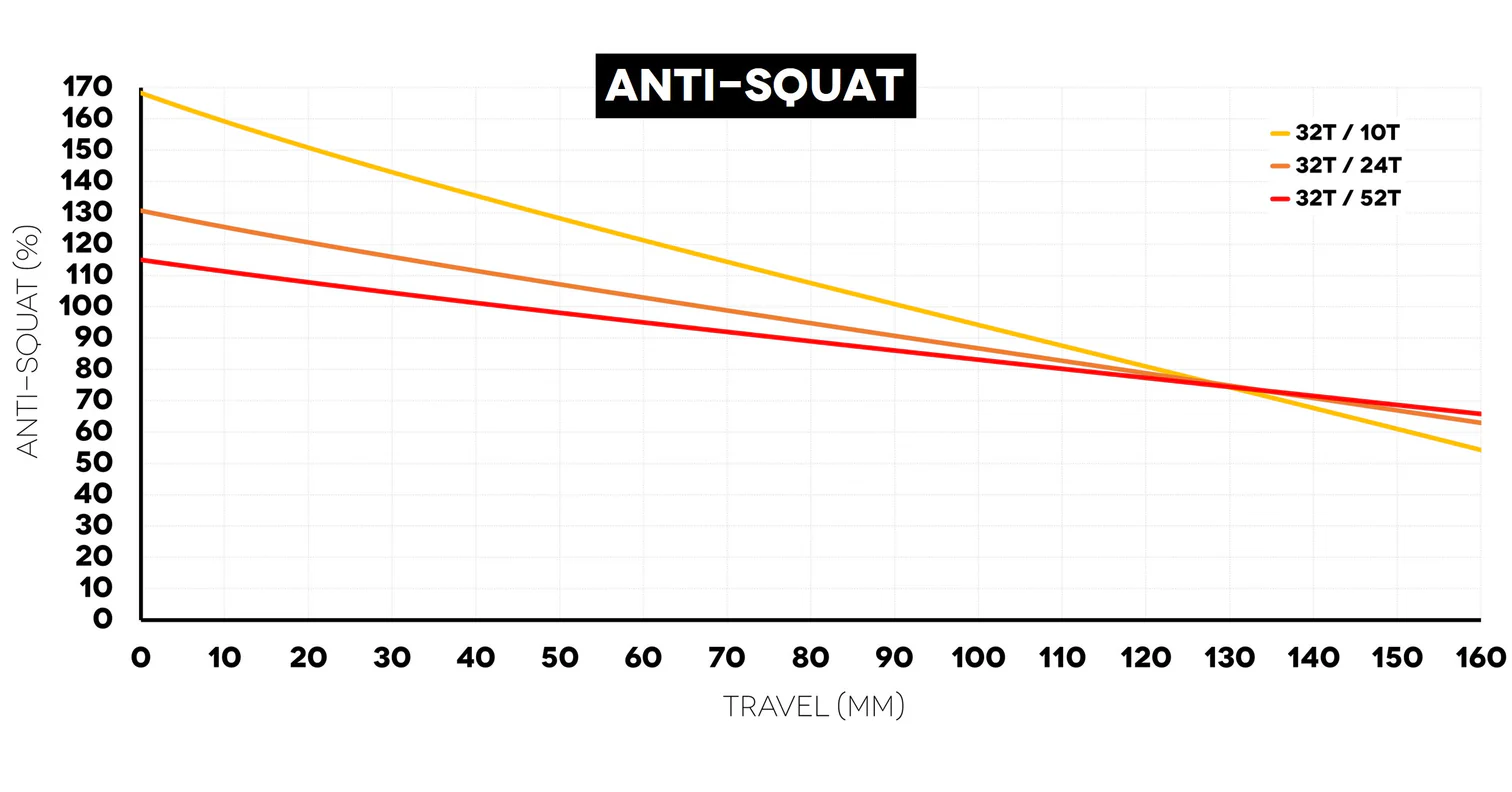
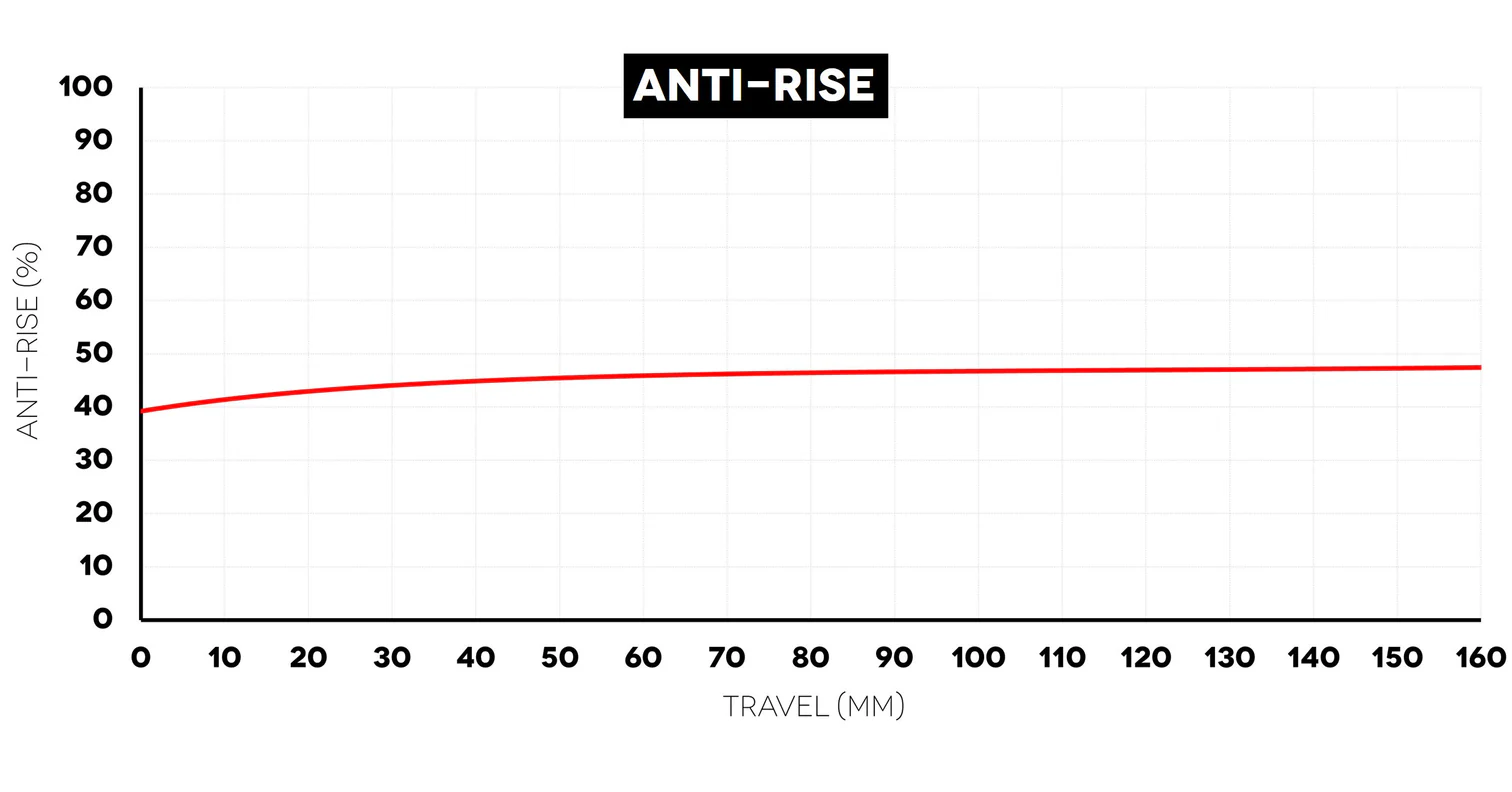
The Madonna V3 also features a great deal of frame adjustability, with swappable lower shock mounts (shared with RAAW’s Yalla! DH bike) that can toggle the bottom bracket height up or down by 3 mm. They also create corresponding changes to the headtube angle and other geometry numbers, and/or alter the total amount of progression by +/- 3%, from the default starting point of 26%. Each of the nine possible combinations uses a dedicated pair of lower shock mounts, which are sold separately, so experimenting with all the options is somewhat involved, but they’re they’re if you want them.
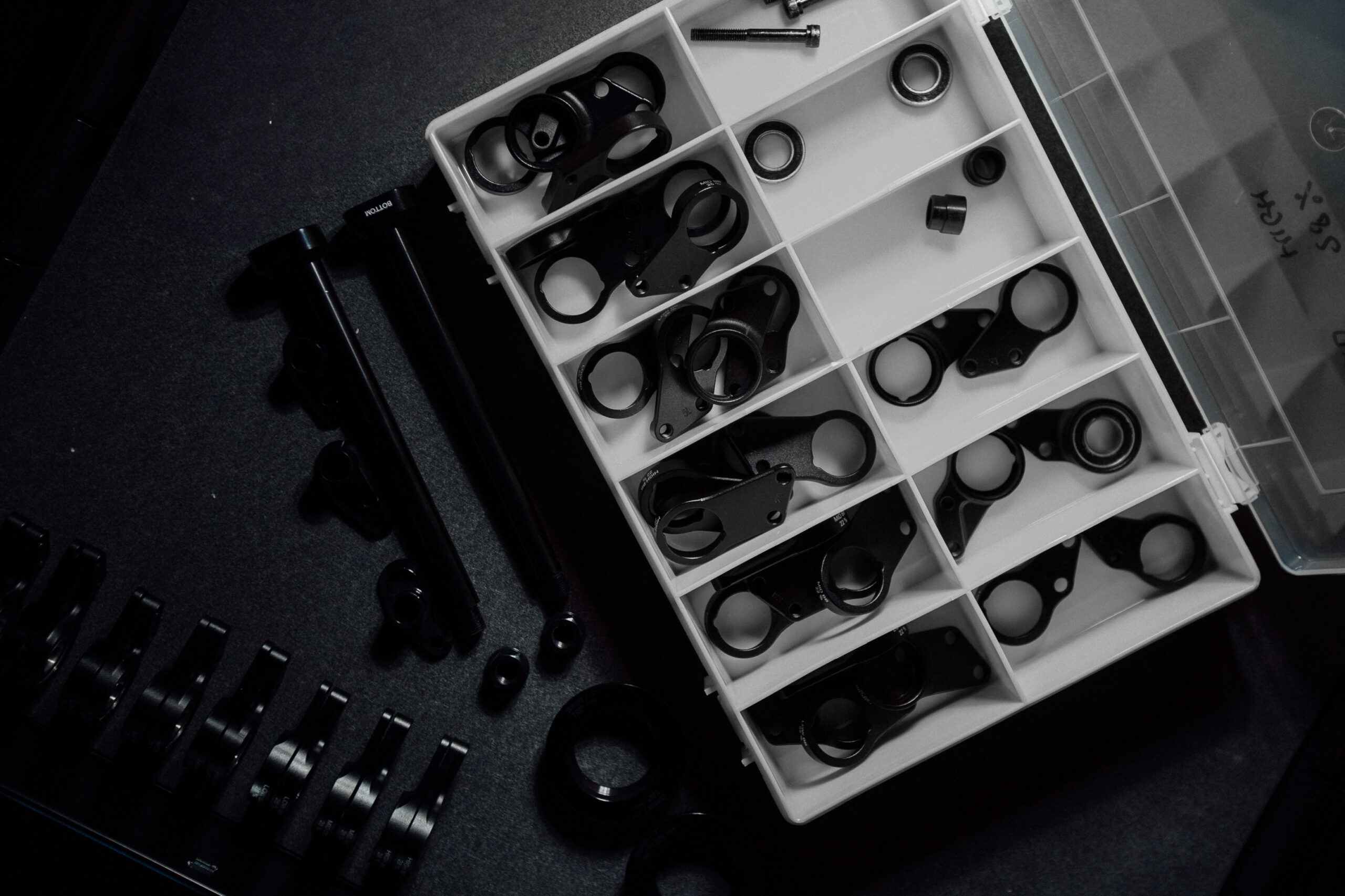
The prior-generation Madonna featured adjustable-length chainstays. These optionally carry over to the V3 — you can have your choice of a SRAM UDH (and therefore T-Type groupset compatibility) or chainstay length adjustment and a normal derailleur hanger, but not both. Packaging a UDH and a flip-chip into the dropout is tough, so RAAW decided to offer an optional UDH-compatible seatstay for folks who want one, but the default option is their own hanger with the chainstay length adjustability.
To round things out, the Madonna now features a straight 56 mm headtube to open up more room for reach and/or angle-adjusting headsets. Many of those will still require an external lower cup if you’re running a single-crown fork with a tapered steerer tube, but RAAW now condones running a dual-crown fork on the Madonna (provided that the 598 mm axle-to-crown limit is adhered to). RAAW recommends a 180mm-travel setting if you go the dual-crown route, and the integrated fork bumpers from the Yalla! are compatible with the Madonna.
The other frame details are suitably no-nonsense — the cable routing is external, the bottom bracket shell threaded, and the chainguide tabs removable. There’s room for a water bottle inside the front triangle on the full size range (up to a 500 ml one on the Small and Medium frames; 750 ml on the Large on up), plus an accessory mount on the underside of the top tube.
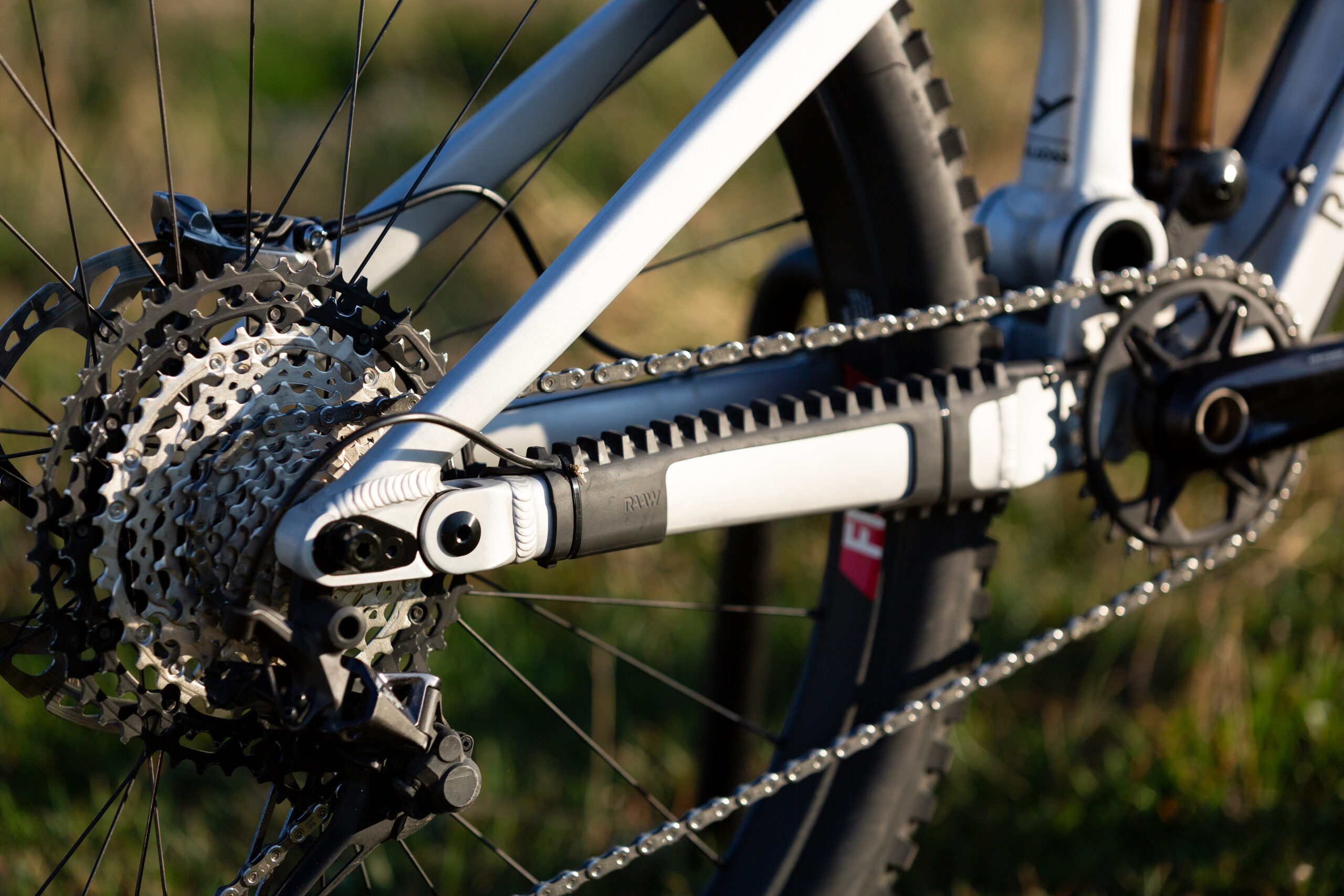

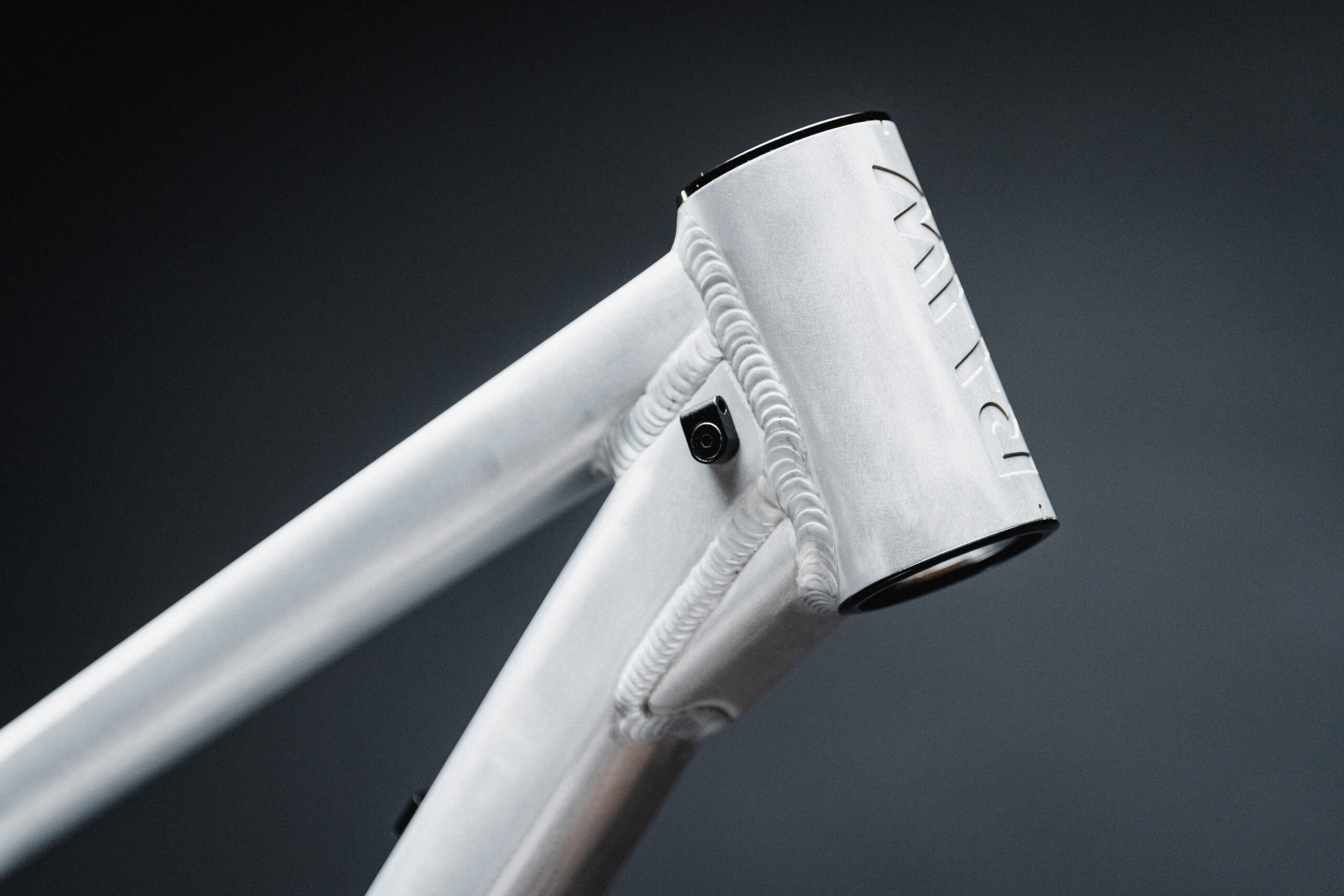

Fit & Geometry
The biggest change to the Madonna’s geometry is the addition of a new XXL size — the V2.2 topped out at an XL. The reach on the four smaller sizes is unchanged (starting at 430 mm on the Small and growing in 25 mm steps to 505 mm on the XL); the XXL comes in at 530 mm. The headtube angle has been slackened by half a degree, to 64°, and the chainstay lengths have grown by 5 mm. The middle chainstay setting on the Small and Medium frames is now 445 mm, the Large comes in at 450 mm, and the XL and XXL get 455 mm stays, with +/- 5 mm of adjustment available if you forgo the UDH seatstay option in favor of the adjustable stock seatstay.
The Builds
RAAW offers the Madonna V3 as a frame only or with Fox and Ohlins “rolling chassis” options. The full details weren’t available ahead of the launch, but we’ll update with more complete info on those when we get it.
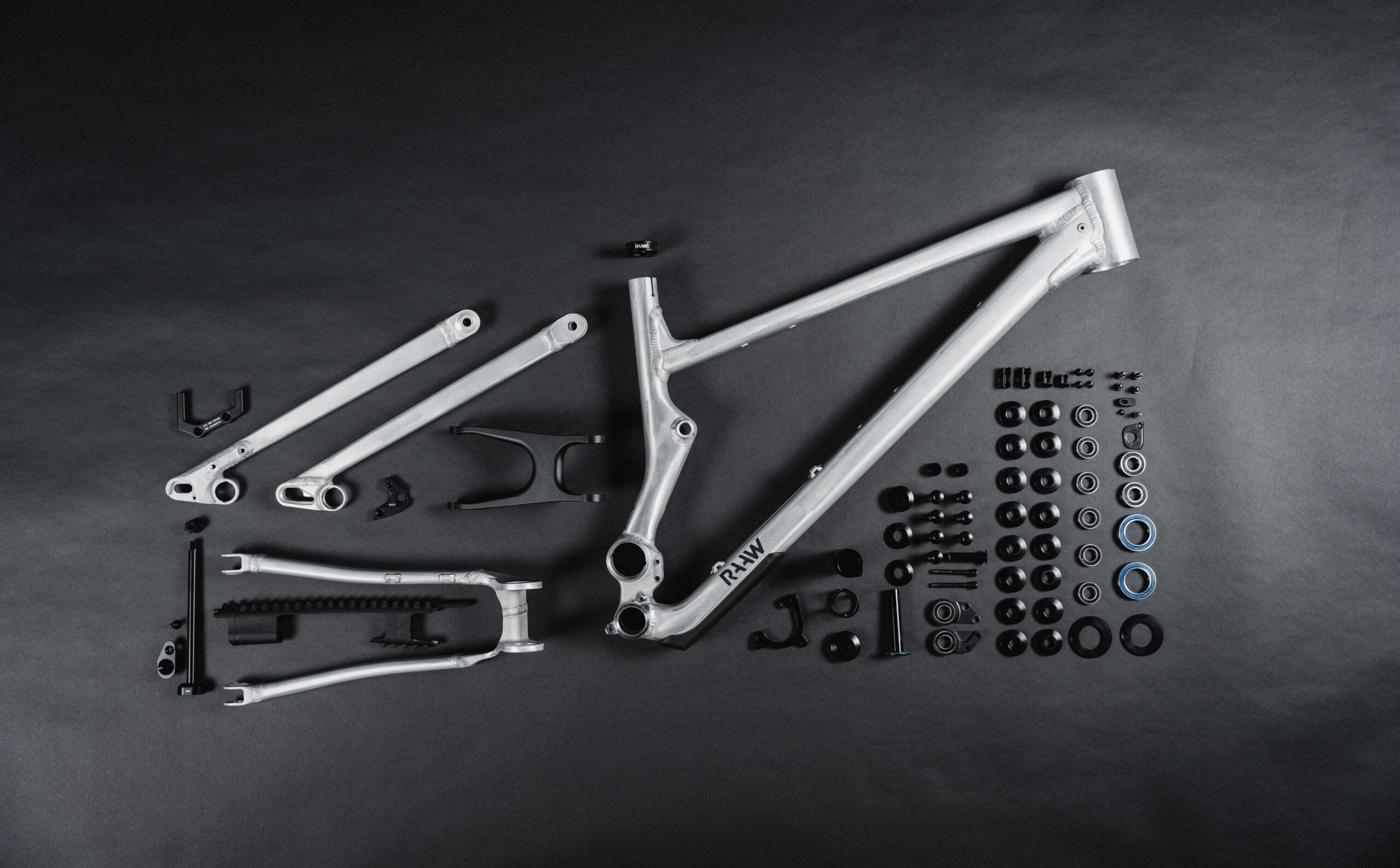
Some Questions / Things We’re Curious About
(1) The Madonna V3 is, by all appearances, a well-thought-out and purposeful take on an Enduro race bike. But how does it perform on the trail, and how does it compare to the many, many other good options in that class — perhaps most interestingly, the upcoming Privateer 161 V2?
(2) Does the Madonna feel like a super game-on race bike that just wants to go fast, or is it more versatile as a do-it-all all-rounder?
FULL REVIEW
David Golay (6’, 170 lb / 183 cm, 77.1 kg): I’ve got a soft spot for metal bikes (listen to Ep.221 of Bikes & Big Ideas with Neuhaus Metalworks for the whole history). I appreciate ones that are well-built and easy to work on, rather than having fancy integration and hidden features. I also spend more time on big Enduro bikes than any other category of bike (when I’m not reviewing something else).
So, on paper, the RAAW Madonna checks a whole lot of boxes for me. But would it live up to its promise on the trail? I was eager to find out.

Fit & Sizing
David: RAAW’s recommended sizing puts me squarely on the Large Madonna frame, outside of the overlapping regions for the Medium and XL sizes. While I think that the Large was the right size for me, I was closer to wanting to size up than moving down.
In short, I think my personally ideal sizing would be a little bit bigger than the Large, but not by so much that I was tempted to make the jump to the XL. I mostly felt that way in certain high-speed descending scenarios (more on that below). The seated pedaling position on the Large Madonna is on the more compact side of my ideal range, but still within it; adding almost 30 mm to the effective top tube length by going up to the XL would likely be a little more stretched out than I’d like.
The Madonna’s combination of a fairly average reach and a very tall stack height also makes for a fit that feels a bit different from many modern Enduro bikes. This highlights how simply looking at just one or two numbers on a geometry chart isn’t very meaningful when it comes to sorting out bike fit.
On one hand, the Madonna’s quite tall stack height means that a lot of folks will wind up with an effective reach that’s a little longer than the geometry chart might suggest, simply because they need to run fewer stem spacers to achieve the bar height they’re after. Consequently, they wouldn’t shorten the effective reach as much as they would on an otherwise similar bike with a shorter stack height. And that tall stack height feels entirely congruent with the overall fit and handling of the Madonna. As we’ll dive into in the “Descending” section, it’s a bike that works best when ridden from a relatively centered position rather than an especially forward one.

However, as stack heights have grown longer on a lot of modern Enduro and DH bikes, I’m actually finding myself preferring slightly longer reaches to go with them. Stretching the stack or reach increases the distance between the bottom bracket (and through it, your feet) to the handlebars. Viewed through a certain lens, lengthening one would best be paired with shortening the other to keep a similar overall distance between the two points of contact on the bike (when standing up and descending). That viewpoint has its proponents, but I’ve got a different perspective.
[This is going to be a pretty nerdy aside on bike fit that’s not all that specific to the Madonna. I’m just using this review as an excuse to write something that I’ve been kicking around in my head for a while. If you’re just here for info on how the Madonna rides, feel free to skip down a couple of paragraphs.]
It might make sense to focus on the bottom-bracket-to-headtube distance (i.e., the hypotenuse of the reach / stack triangle) if we rode mountain bikes rigidly, didn’t move around on them much, and if managing weight distribution between the two wheels wasn’t important. But that’s not remotely the case. Even if we just focus on the descending side of the equation and set aside seated body positioning, your hips and torso positions in space at any given moment are hugely important for managing weight distribution on the bike, and keeping yourself in an athletic position where you can move around, soak up impacts, and so on.
So there’s a general window where you want to have your center of gravity on a given bike. Exactly where that lands depends on a ton of factors, including the rest of the bike’s geometry, the body proportions and riding style / preferences of the rider in question, etc., but it’s there somewhere. On bikes (like the Madonna) that encourage a comparatively centered position and thus somewhat higher-than-average bars to get there, a slightly longer reach can feel more natural and give me more room to move around on the bike.

I think this is partly because a higher front end puts my hands closer to my shoulders and then makes the cockpit feel a little more compact. A bike with a shorter reach that also works well with the bars lower will have me reaching down more to get to the bars, consequently stretching my arms back out a bit; making a bike work with the bars higher affords a little more room to also stretch out the reach.
Anyway, I like the approach RAAW has taken with the fit and weight distribution on the Madonna. I think it pays real dividends when it comes to descending performance, as we’ll get to in a minute. I just happen to be a little bit between sizes on it, but that’s going to happen for some folks no matter what you do sizing-wise (apart from maybe offering a zillion different sizes with tiny steps between them). I still think the Large frame is the best size for me out of the available options; I also think something a touch bigger (but not all the way up to the XL) would be ideal.
Zack: Despite being nearly the same height as David, my proportions are a bit different, primarily in that I have slightly shorter legs, a longer torso, and what I suspect (but haven’t confirmed) to be slightly shorter arms. That means, while I agree with David that I wouldn’t have minded a slightly longer seated position on the Madonna, I am quite sure that the Large was the best option for me.

While I’ve ridden and enjoyed bikes with 485–490 mm reaches, a combination of long reach and long chainstays can start to make a bike feel a bit too cumbersome for my more playful and precise riding style. The highly centered body position afforded by the Madonna’s balance of 480 mm reach and 450 mm stays felt intuitive to me from the get-go, in that it felt stable without being too cumbersome to move around on the trail. The not-overly-slack 64° head angle also undoubtedly helped, not being too floppy-feeling at slower speeds while still offering plenty of stability.
I mentioned this in an earlier Bikes & Big Ideas episode, but I had very limited time with the Madonna and didn’t have enough spare cockpit parts to really dial in the feel. More specifically, I felt like I struggled a bit with my shoulder positioning over the front end. I suspect that the very tall stack, combined with the stock 35 mm rise bars (which were also cut a bit narrower than my preference), were to blame. Given the monstrous 664 mm stack on the size Large, I’d wager that lower-rise bars cut to my preferred 785 mm width would have helped me feel more in tune with the front end, especially on flatter trails.
Climbing
David: The Madonna’s climbing performance feels fairly typical of a well-sorted, modern Enduro bike. It pedals reasonably efficiently, but its suspension performance under power suggests the bigger goal was to balance efficiency and traction / compliance rather than go all in on one at the expense of the other. To be clear, I’m not complaining at all — the Madonna’s climbing performance may not elicit a ton of superlatives in any one specific area, but it’s well-rounded and easy to get along with.
As per usual for bikes in this class, the Madonna feels most at home grinding up longer, extended climbs that reach bigger descents, rather than thriving in rolling terrain with lots of short, punchy climbs. Its steep seat tube and compact seated cockpit make it easy to stay centered on the bike and in a comfortable position for the long haul, but the Madonna isn’t especially eager to pop out of the saddle and push the pace up the hill.
Again, that’s all pretty normal for a ~160mm-travel Enduro bike, and there are more efficient options in this class if you’re looking for something that’s a little more adept at trying to push the pace on the climbs, rather than taking a more leisurely approach to them. (Check out our Deep Dive on the Madonna for a bunch of relevant comparisons.) On the flip side, those sorts of bikes don’t tend to offer as much traction under power as the Madonna, and its overall efficiency is still quite respectable so long as you keep your pedal stroke moderately steady.
Zack: I agree with David on all fronts here. My main takeaway being that the Madonna climbs quite comfortably for an all-metal, burly-looking Enduro rig. It so happens that the Madonna and my personal Kavenz VHP 16 share a rather short effective top tube length, mostly driven by steep seat tube angles on both. I’ve personally found that a 45 mm stem and sliding the seat slightly backward on the rails helps to overcome the downsides of the short seated position as far as granting a more stretched and comfortable position on longer climbs while keeping handling fairly consistent elsewhere.
Descending
David: Even among ~160mm-travel Enduro bikes, there’s a pretty wide spectrum of overall ride characteristics, and I was particularly curious to see how game-on and demanding of being ridden hard (or not) the Madonna would feel. What I found is interesting — and potentially very compelling for the right folks.
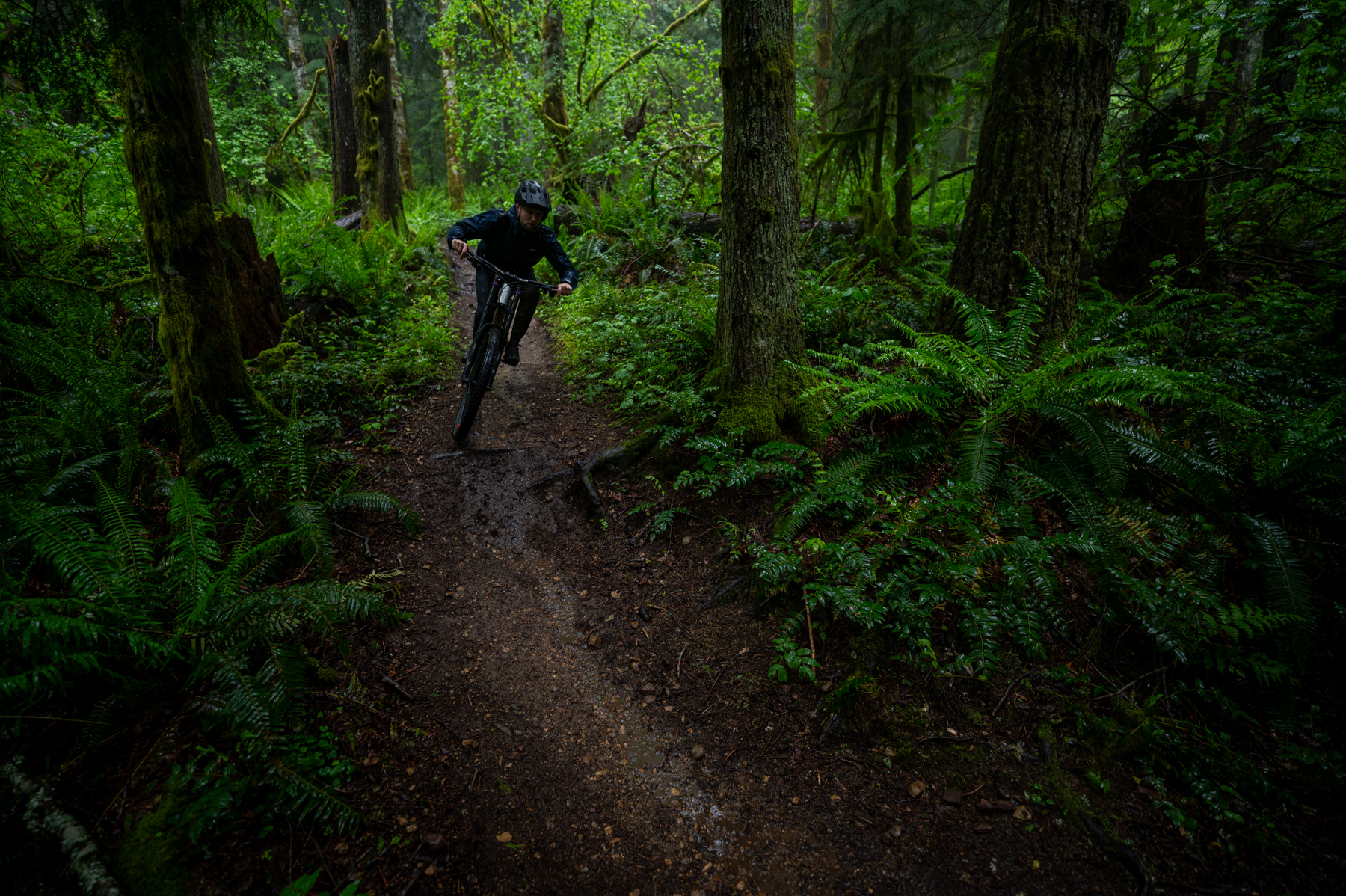
The short version is that the Madonna does an especially good job of being composed and confidence-inspiring in steep, challenging terrain, and it does so without demanding that you be going wildly fast and pushing it hard. You certainly can go rage on the Madonna if you want to, though. I wouldn’t characterize it as a specifically easygoing bike, but rather one that does a way above-average job of being approachable and manageable if you’re feeling timid or just taking things easier while still having a very high top-end to go big and fast, too.
Somewhat unsurprisingly, given its tall stack and moderately long chainstays, the Madonna is happy to be ridden fairly centered, rather than demanding you get farther forward on the bike to weight the front wheel. That’s a big factor in making the Madonna so composed and confidence-inspiring on steeper, more technical descents. There’s a relatively big sweet spot to move around on the bike (particularly for one that isn’t wildly long by Enduro-bike standards); the comparatively centered body position that the Madonna encourages makes it easier to keep your chest up and soak up impacts through your legs, especially, without getting pitched around too badly.
The tradeoff there is that the Madonna isn’t all that engaging or energetic-feeling on slower, flatter, tighter trails. If you don’t have much speed or pitch to work with, the high front end of the Madonna can feel a little awkward to get forward on and load up the front wheel, and at lower speeds, the Madonna can feel pretty planted and take some work to pick up over smaller obstacles. The bar for how fast you need to be going for the Madonna to feel intuitive isn’t all that high, but there are any number of shorter-travel bikes that are more exciting on mellower trails, and a good few within the Madonna’s class, too. (Check out our Deep Dive on the Madonna for lots of specific bike-to-bike comparisons.)
But again, I think giving up a little bit of sharpness on the sorts of trails it’s not really meant for is a perfectly reasonable tradeoff for how well the Madonna does once things get a little steeper and faster, and one that a lot of folks will be happy to make.
The Madonna’s suspension performance is also excellent. There’s nothing too groundbreaking or unusual going on with it, but it’s consistent, predictable, and easy to set up. Small-bump sensitivity and grip are excellent, particularly with the Öhlins TTX22 coil shock we tested on the Madonna (there’s more on the multiple shock options we tested in the “Build” section, below).
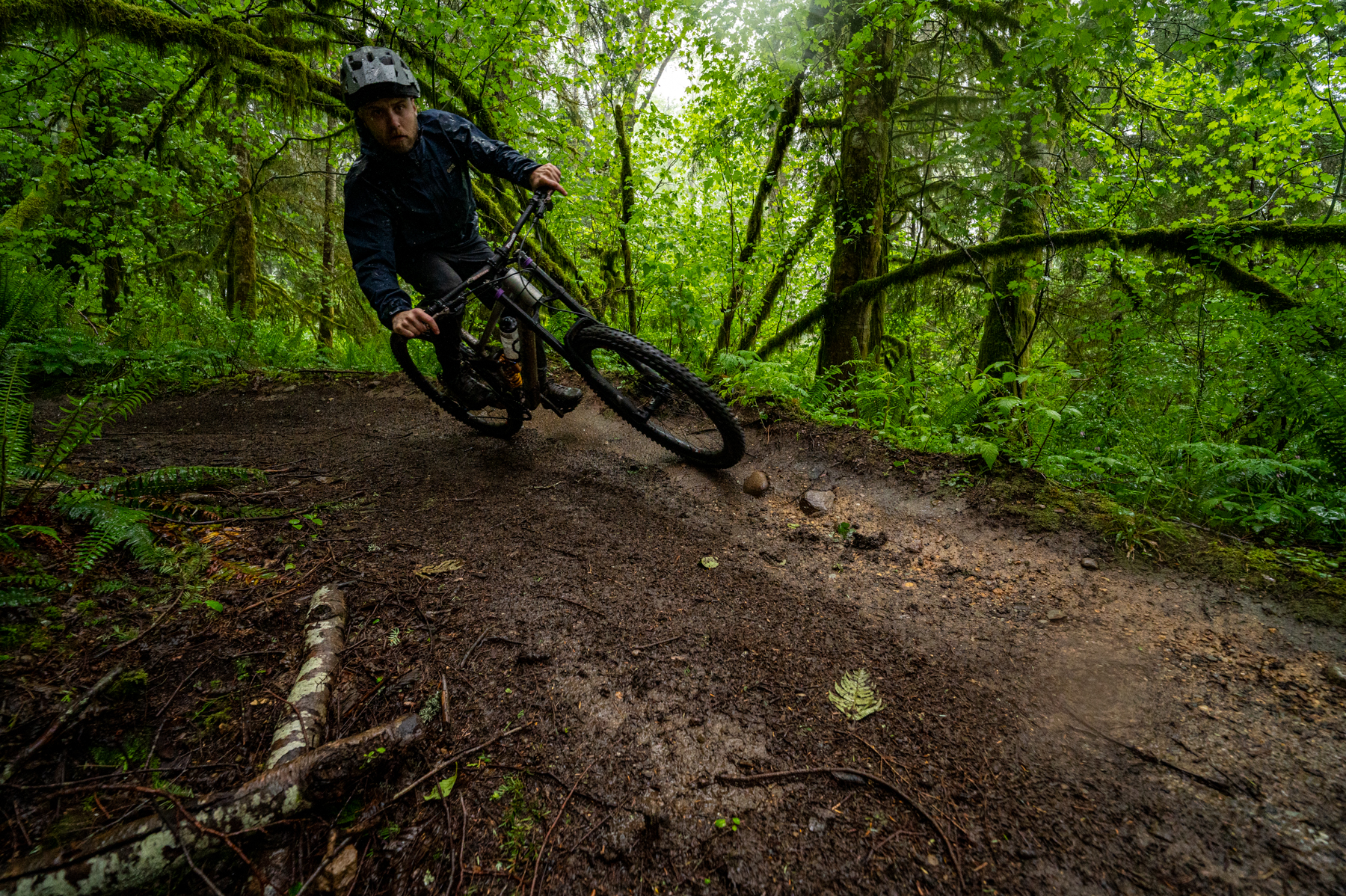
Overall, I’d place the Madonna a notch on the more planted / less lively end of the spectrum for a modern Enduro bike, but it’s not super far in that direction and still feels well-balanced. There are more emphatically poppy, freeride-oriented sorts of bikes out there if that’s specifically what you’re after, but the Madonna jumps well and is plenty manageable in the air for what it is.
I did occasionally find myself wanting a little more room to get forward on the bike, particularly in sections full of big holes and compressions that weren’t especially steep but where I was able to carry quite a bit of speed. The sensation wasn’t so much that I was struggling to weight the front end for grip — the Madonna does that quite easily and naturally — but more that I had to tuck the bars slightly tight under me when pumping through and soaking up those compressions.
A hypothetical size between the Large and XL (mostly a Large with a slightly longer reach) would be ideal for me. It wasn’t far enough off that I was at all tempted to size up to the XL — I’m thinking more like 10 mm more reach than the Large, not 25 mm more. I also wouldn’t want the stack height any higher — but a little more reach would be welcome. A reach-adjust headset might help a little, but even with the big ZS56 headtube, running one with a tapered fork would still require going to an external lower headset cup, which I wasn’t all that tempted to do for bottom bracket and stack height reasons.
I also experimented with the low / mid / high bottom bracket shock mounts for the Madonna, all in the mid-progression option. I found them to offer a useful range of adjustment without going so far as to completely change the character of the bike, or wind up off the deep end with a setup that felt out of whack. The higher bottom bracket option made the Madonna a little more lively and maneuverable at lower speeds at the expense of some higher-speed stability and slightly less impressive cornering manners at pace; the low one shifted things in the opposite direction, but raised the front end and shortened the reach a touch more than I wanted. The middle option was my Goldilocks setting most of the time.
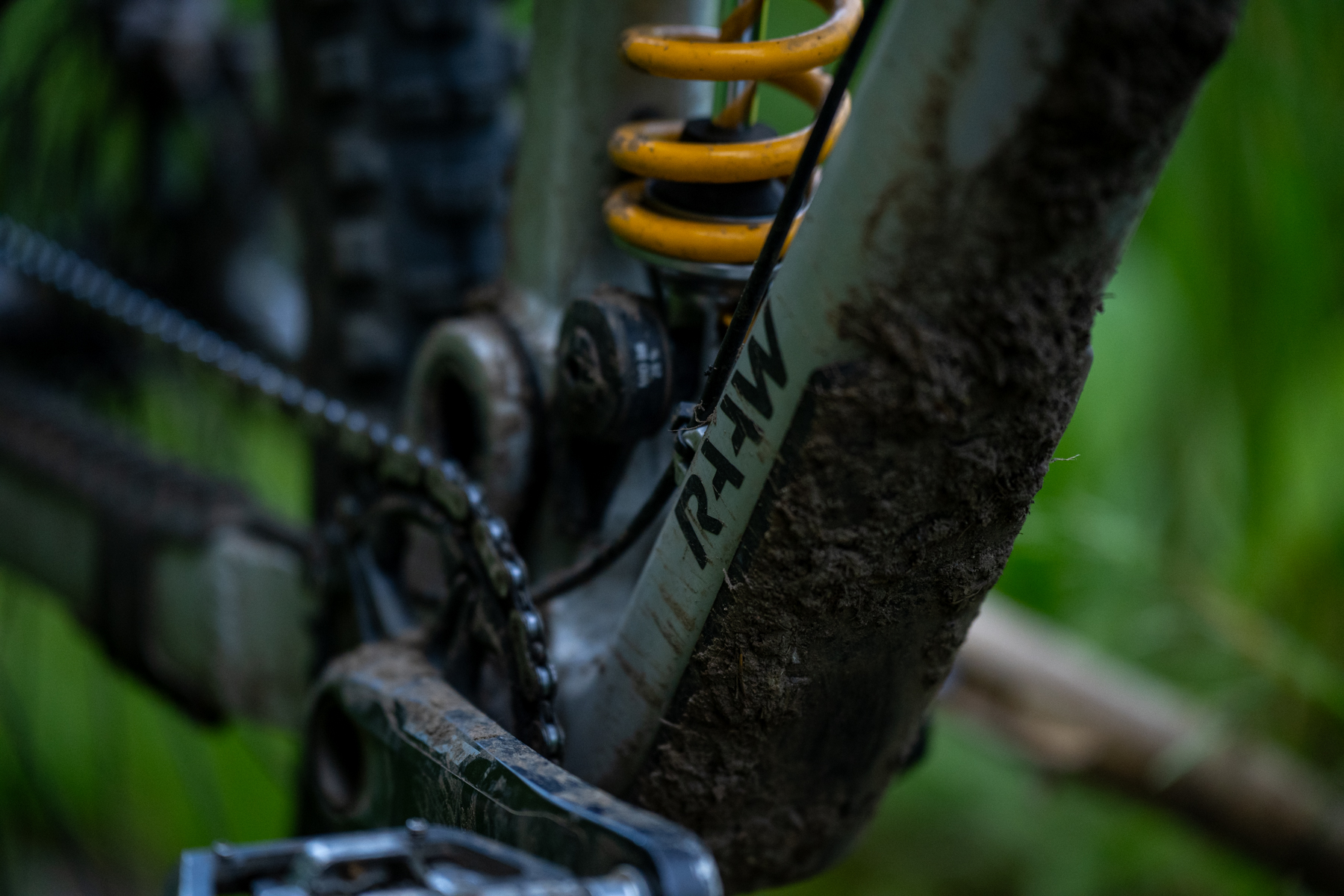
Zack: For context, David got a whole lot more time with the Madonna than I did and also figured out a much better cockpit setup than it showed up with. But even with the less-than-ideal setup that I tried (including a bad rear brake), the Madonna lent a ton of confidence in the sorts of places where I otherwise often find myself thinking twice about what I’m about to throw myself into. Its very high stack measurement and low bottom bracket height helped create a remarkable sense of fore/aft stability in really rough terrain, giving the bike a marked sense of poise when things got a bit hairy.
That sense of integration between the wheels was beneficial at high speeds in rougher terrain, but also at more moderate speeds in particularly steep and technical sections of trail, where the natural stance felt tall and confident, yet not at all like I was about to get tossed out the front door. I’ve been seeing more and more Madonnas on the trails here in the Bellingham area and up the Sea to Sky corridor in BC, and given its poise in navigating highly consequential terrain, that’s entirely unsurprising.
On the flip side, even with a more poppy-feeling Float X rear shock installed, the Madonna isn’t the most energetic bike on smoother bits of trail or when speeds come down. It jumps well and corners markedly well, especially on faster and longer, sweeping corners where it can really lock into a line and hold you there with its brilliant tracking. Perhaps it’s the rather tall body position, more supple and planted rear suspension, or both, but the Madonna was so good at just trucking through rough sections that I often just gave into that strength rather than feeling inspired to take more playful, creative lines.
The Build
David: RAAW doesn’t offer complete builds on the Madonna, so I won’t dwell too much on the parts spec of our review bike, but we’ll cover some of the more relevant bits.
(For what it’s worth, we started with a Shimano XT drivetrain and brakes and then swapped to Hayes Dominion A4 brakes when the XT rear brake started badly leaking through a caliper seal. Our review bike came with Newman SL A.30 wheels, Maxxis Assegai / DHR II tires, a Fox 38 Factory fork, and a couple of shock options that we’ll discuss in a moment.)
That’s all pretty typical for a modern Enduro bike, and appropriately so — there’s nothing about the Madonna’s performance that had me wanting to do anything out of the ordinary with the build spec. Our review bike turned up with a 50 mm long stem and the bars trimmed to 770 mm, which produced slightly twitchier steering than I wanted, but swapping to a 40 x 790 mm combo (which is typical for my preferences) took care of that nicely.
As we alluded to above, we spent time on the Madonna set up with both a Fox Float X Factory and Öhlins TTX22 shock. Both felt like viable options on the Madonna, and the stock tunes were well-chosen for the bike, but I preferred the TTX22 overall. The beefier Öhlins coil shock provided notably better small-bump sensitivity and grip, and its increased high-speed compression damping provided a welcome bit of extra composure at speed in rougher terrain. The Float X made the Madonna feel a touch more lively and saved a little weight (not that I cared much), but the TTX22 suited my preferences and the overall character of the Madonna a little better.
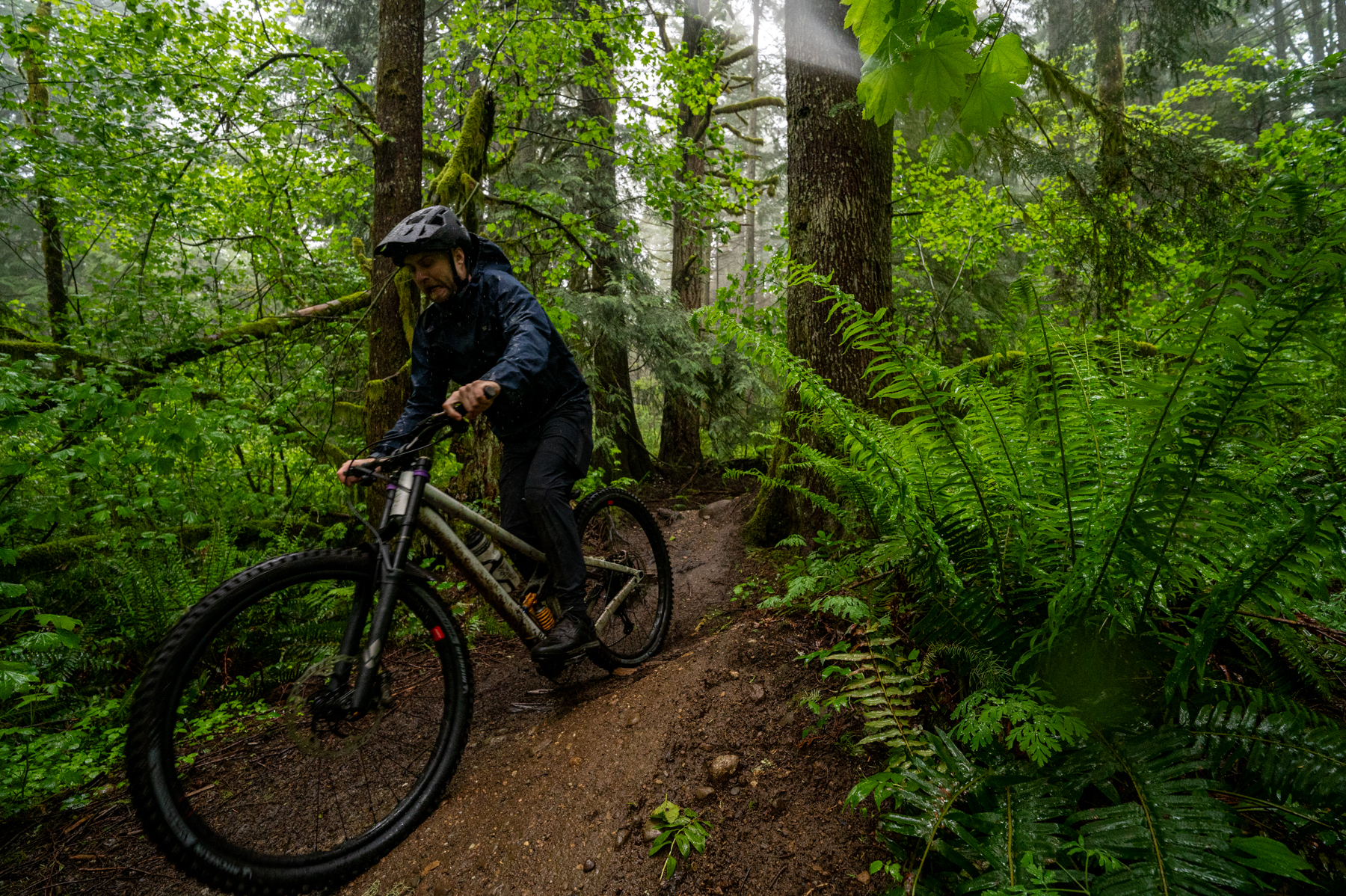
RAAW’s recommended spring rates for the TTX22 also seemed pretty on the money for me. They list three different spring rate charts for “soft,” “regular,” and “firm” setups, and at ~77 kg (170 lb), I’m between the 75 and 80 kg lines on all three. RAAW recommends the Rocker 60 link and a 480 lb spring for the “regular” setup and a 75 kg rider, or a 502 lb spring for an 80 kg rider. The 480 lb spring that our review bike showed up with was a little softer than I wanted, but going up to a 502 lb one did the trick (all with the recommended Rocker 60 link). I could imagine going up another spring rate to a 525 lb one if my typical trails were a little flatter and pushed my weight bias a little more rearward, but for my generally steep, winch-and-plummet sort of local ones, the not-super-firm 502 lb spring was great.
The overall build quality of the Madonna is also quite good. The pivot hardware is well thought out and easy to work on, and it features huge bearings with some of the best secondary sealing we’ve come across. The chainstay protection has great coverage and does a good job of minimizing chain slap, and the inclusion of alignment notches on the headtube to make installing offset headset cups easier is a nice touch.

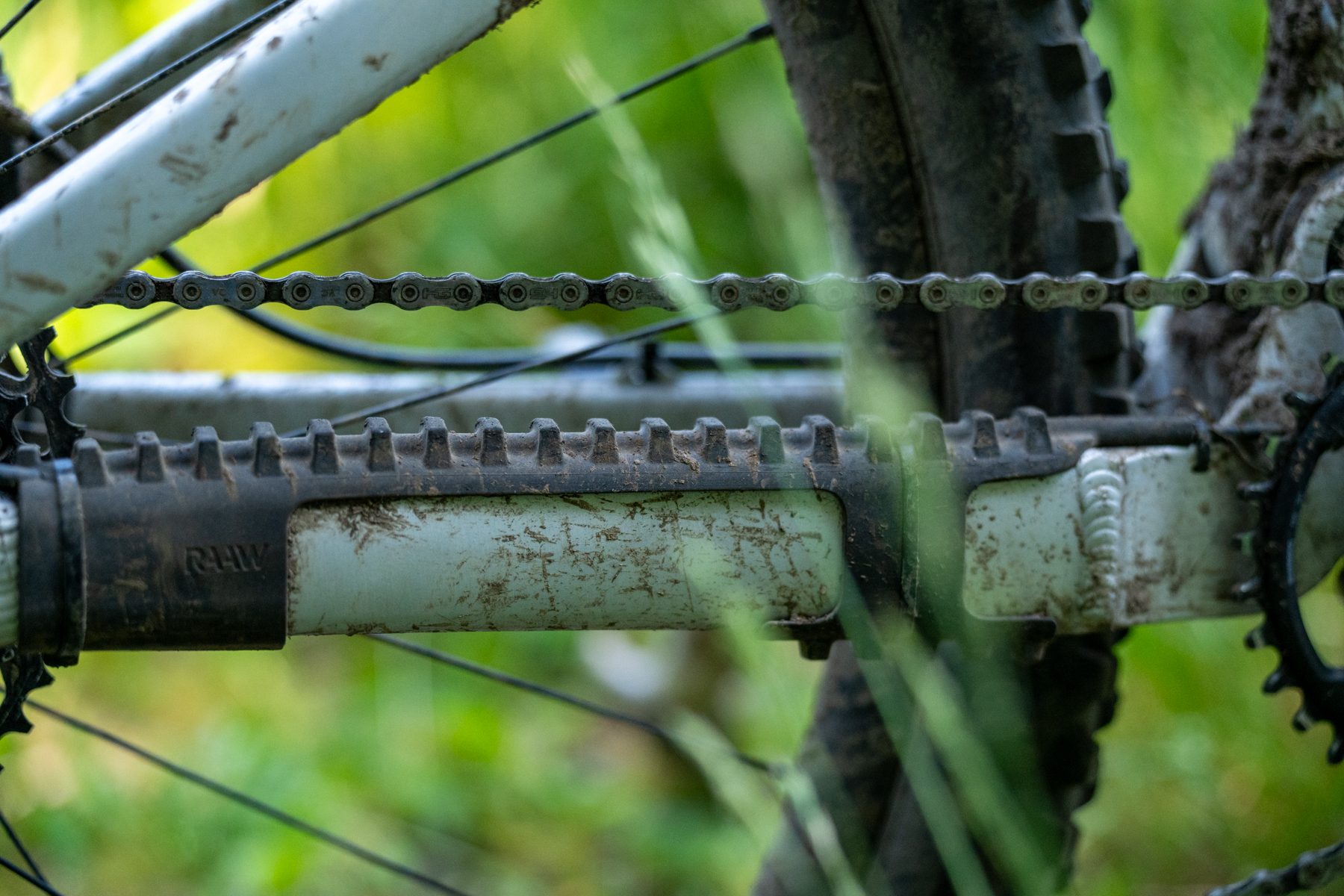
The Madonna frame also feels relatively stiff — but to a level that I found to be pleasantly direct and precise in how it tracked, without being over the top and harsh-feeling. It’s a beefy, well-built frame, and while we didn’t strip it down to get a measured frame-only weight, both RAAW’s stated frame weight of 3.9 kg / 8.6 lb and that of our complete bike (16.31 kg / 35.96 lb) are plenty reasonable.
I’m also a big fan of the fact that the Madonna features external cable routing throughout. It’s generally tidy and has been rattle-free, though it’s a minor annoyance that one of the water bottle bosses doubles as a cable clamp. It’s far from the end of the world, but lining up the water bottle cage, all the cables, and both halves of the cable clamp is a little fiddly. Adding one more boss so that both the cables and the bottle could have their own dedicated mounts would be nice.
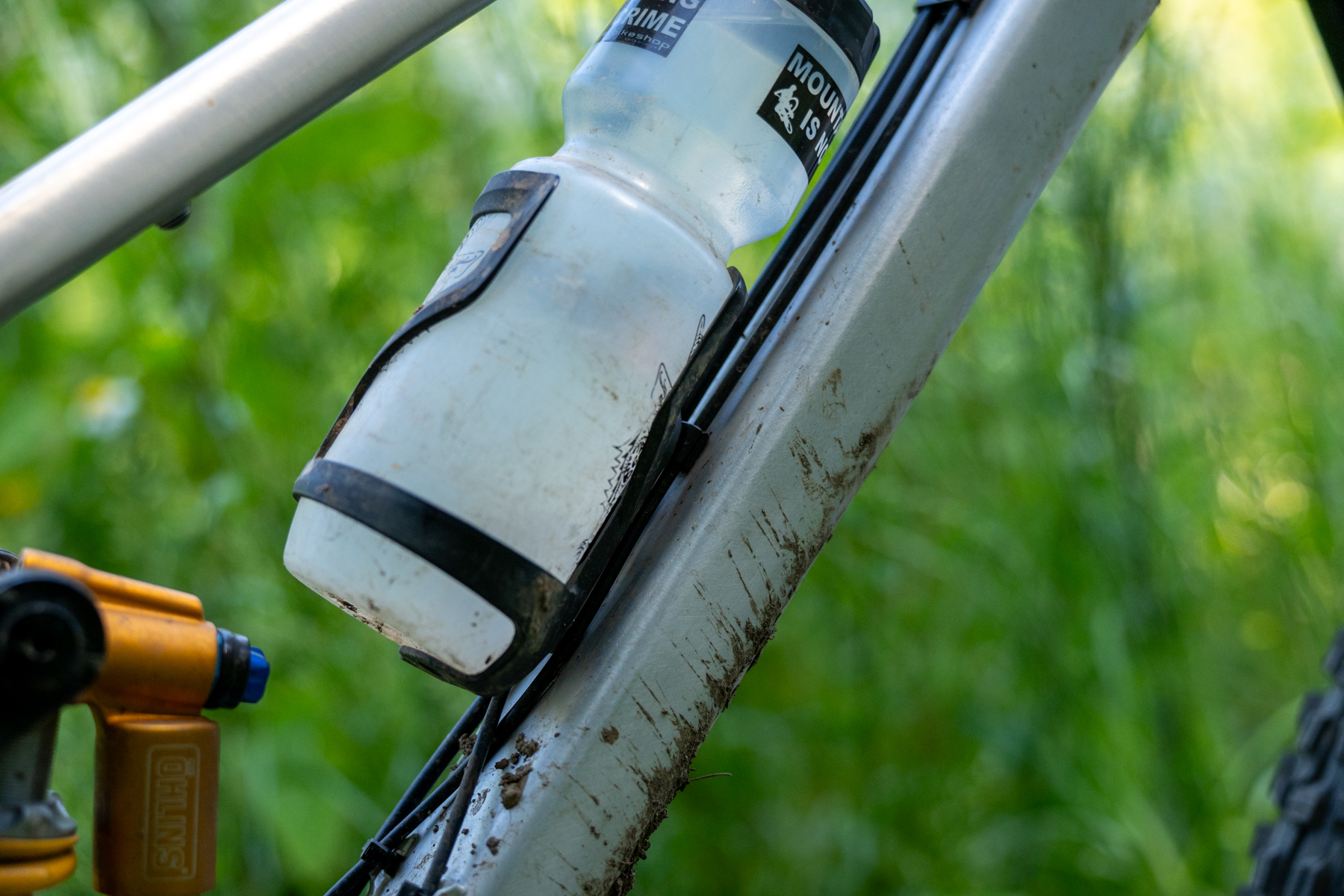
The optional adjustable-chainstay-length version of the Madonna’s swingarm that we tested is a nice touch, but changing the chainstay length requires swapping quite a few parts, which makes experimenting with the various options somewhat pricey. Rather than using a more conventional pair of flip chips and separate axle, RAAW machined the entire non-drive-side flip chip into the axle itself; that means you can’t thread the axle into the frame, so instead, there’s a nut that threads onto the drive-side end of the axle to tighten everything down. You then also need to swap the bolt-in axle inserts in the dropouts and the brake mount to move the caliper back into alignment with the rear wheel. And finally, the axle threads are offset from the central axis of the axle itself, which means that all three positions require different versions of the axle itself, rather than simply flipping it around.
RAAW says that this arrangement stiffens up the frame and reduces the possibility of creaking and/or the axle coming loose, but it also means that the full kit to try a different chainstay length costs $104 per position. We only got the stock middle position option to test, but the 450 mm chainstay length that it produces felt nicely balanced and I wasn’t all that strongly tempted to deviate from it. If anything, I’d be more curious about going to the longer 455 mm chainstay setting than the shorter 445 mm one, but didn’t have the opportunity to do so.
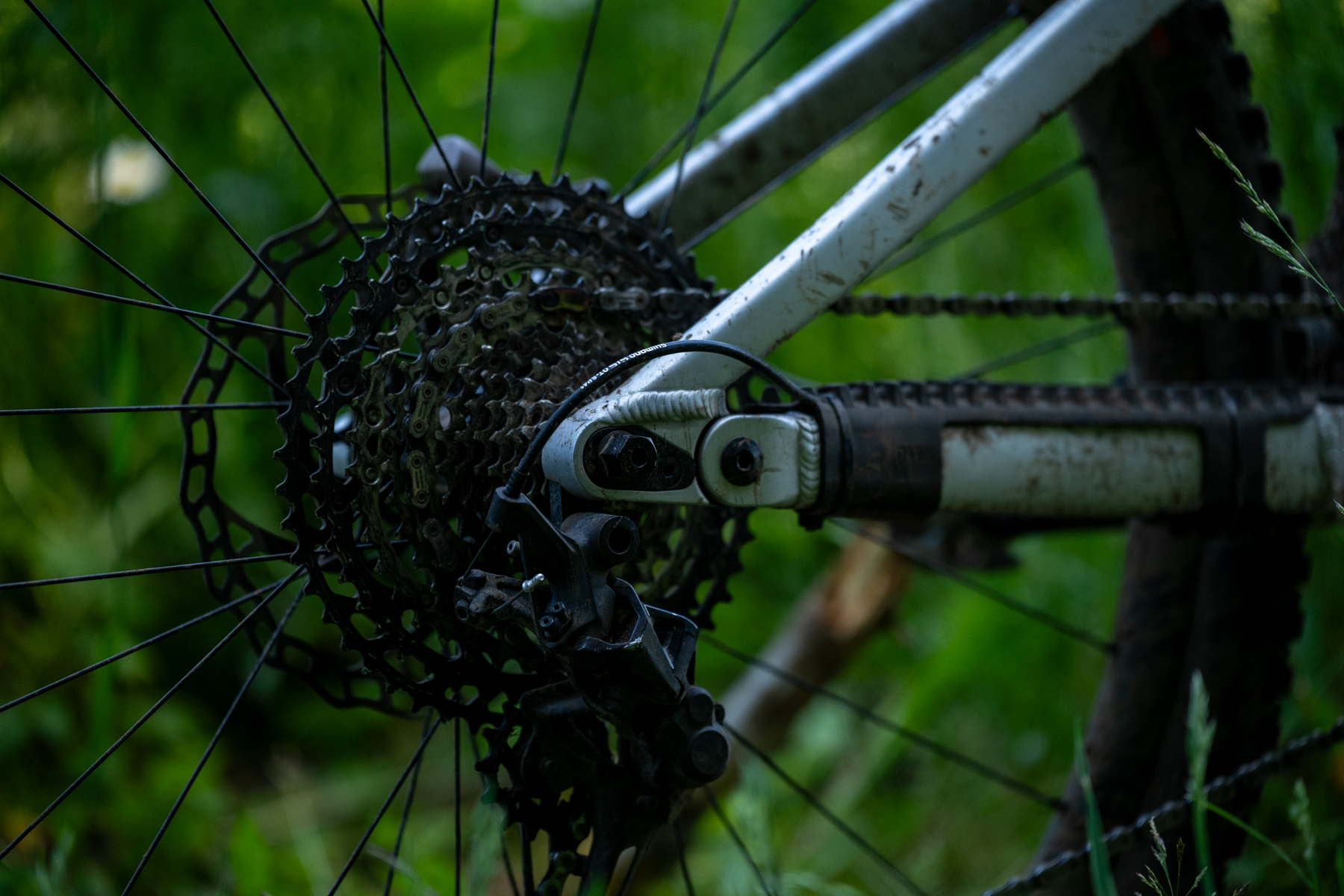
Who’s It For?
David: The answer here feels straightforward: the Madonna is for folks who want a burly, no-nonsense bike that’s easy to live with long term and is very confidence-inspiring in steeper, rougher, terrain — whether you’re an expert rider who wants to really charge on those sorts of trails, or a less experienced rider looking to step out into them.
The Madonna does an impressive job of being able to be pushed very, very hard without demanding that you do so all the time. While it’s not the most engaging on flatter, mellower trails, that’s a fair trade for how wide the Madonna’s performance envelope feels once you bring it into its element.
Zack: If you’re a rider looking to up your game in more consequential terrain, the Madonna is a great companion, whether you’re an expert-level badass or simply trying to keep up with your faster friends. It’s not necessarily the all-rounder that a lot of Enduro bikes try to be these days, in that it does thrive on the more adrenaline-rich side of the sport, but I think it’s damn near unrivaled when composure is key.
Bottom Line
David: I’ve long admired RAAW’s approach to building burly, easy-to-maintain bikes with well-sorted suspension and progressive geometry, and our time on the Madonna V3 confirmed that they really are on to something here. The Madonna is unapologetically a proper, modern Enduro bike and needs appropriately stout terrain to come into its own, but is well-rounded in its performance once you get there. It’s also a frame that I’d expect to hold up to long-term abuse better than most and be notably easy to live with along the way. The sizing breaks happened to not be perfectly ideal for me, personally, but I still got along very well with the Large Madonna, and if the fit and approach it favors work well for you, it’s a well-built, well-thought-out option.
Zack: The RAAW Madonna feels like a bike conceived by riders who couldn’t quite find their ideal blend of aggression, durability, and practicality in the rest of the market. In a lot of ways, it’s an understated bike—it’s aluminum, comes in raw or black, and its suspension design has no acronyms—but the intentionality behind the frame’s finer details and its composure on the trail make it a very compelling option if your local trails can offer up the challenge it deserves.
Deep Dive Comparisons
BLISTER+ members and those who purchase our Digital Access Pass can check out our Deep Dive comparisons linked below. Get our Digital Access Pass to view all our Deep Dives and Flash Reviews, or become a BLISTER+ member today to get access to that and a LOT more, including the best worldwide Outdoor Injury Insurance, exclusive deals and discounts on skis, personalized gear recommendations from us, and much more.
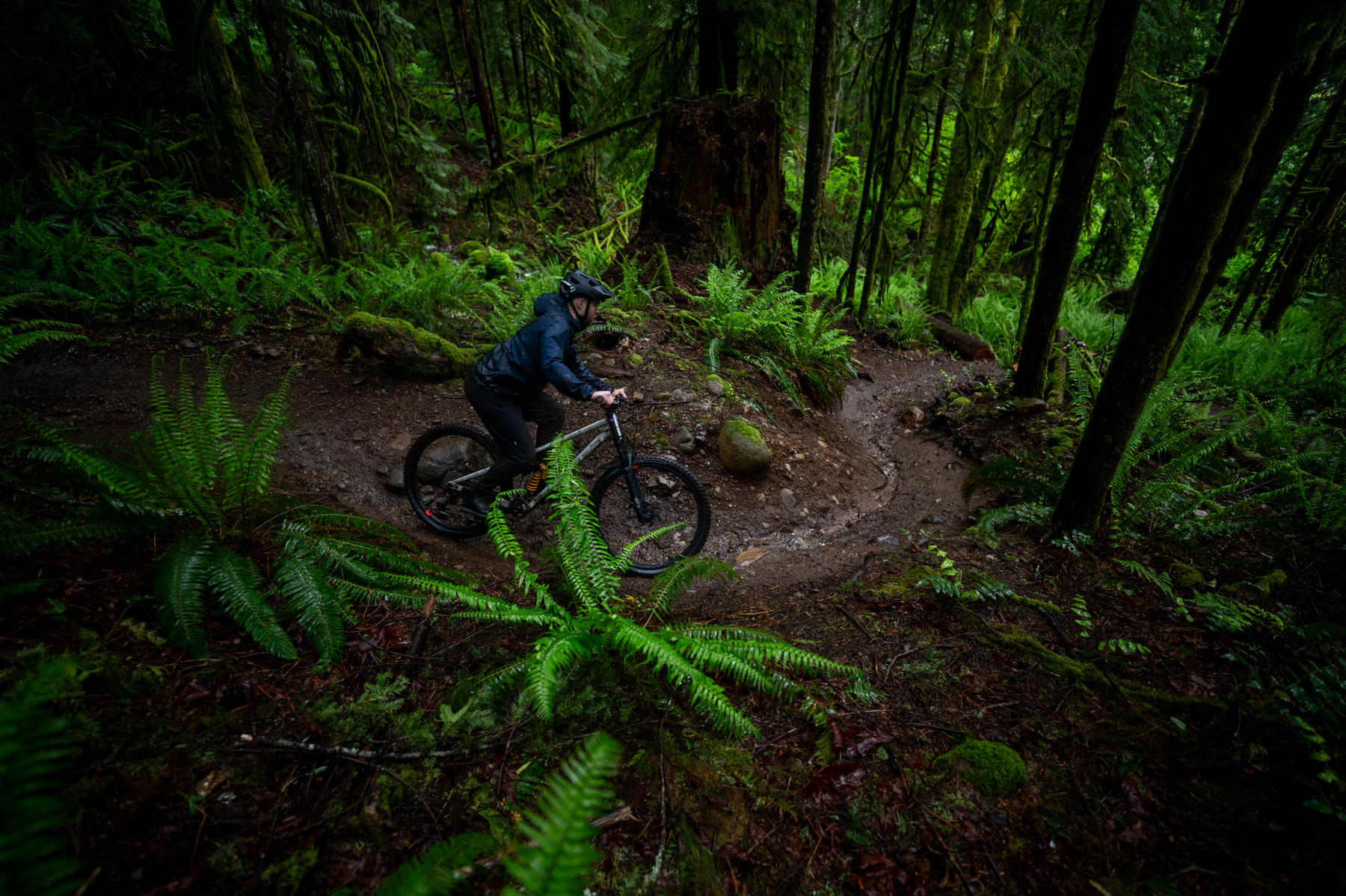
Deep Dive: RAAW Madonna V3
We compare the RAAW Madonna to the Chromag Lowdown, Kavenz VHP 16, Rocky Mountain Altitude, Orbea Rallon, Norco Sight, Nicolai Nucleon 16, Santa Cruz Nomad, Santa Cruz Megatower, Trek Slash, Ibis HD6, Yeti SB160, Pivot Firebird, Yeti SB165, and Marin Alpine Trail.
Blister’s Flash Reviews and Deep Dives are accessible to those who purchase one of our paid subscriptions
To get our comprehensive Deep Dives and our initial, unfiltered reports on new gear, become a member and receive many other services, deals, and discounts.
If you’re already an active member, please log in.
(If you’re already logged in and a member in good standing and seeing this message in error, please refresh this page in your browser.)


I wonder how it would ride in a Mullet configuration? I am (unfortunately) cross shopping Madonna vs VHP16 and have a big headache. I would like to have something slightly more agile that na full 160mm 29er (currently riding a Meta 29 2020), but demoed Nomad and did not really liked it, is was suppler and more agile but on a really rough stuff it was nowhere near my current setup (most probably also because of suspension). You tested VHP with a mullet setup, why not the Madonna?
I can’t speak to the Madonna but I have a lot of time on my Kavenz as mullet and full 29er. Since the geo is so similar I think the two bikes would share a lot of riding characteristics. The biggest difference being the Kavenz high pivot will probably ride a little smoother and have less pedal kickback. I personally prefer full 29er but the mullet also has its advantages (and disadvantages).
In my experience, long chainstay bikes like the Madonna or Kavenz work very well as a mullet. It maintains outstanding front wheel traction. The chassis is nice and stable due to the longer wheelbase. But the mullet setup helps with maneuverability and makes leaning the bike over a little easier. I think the Madonna would probably work very well as a mullet.
I ride my V3 with an ohlins air shock and find it rather playful in fact! At least more so than with a coil shock, and not too far off of my last wreckoning.
did either of you ride this bike at Galbraith?